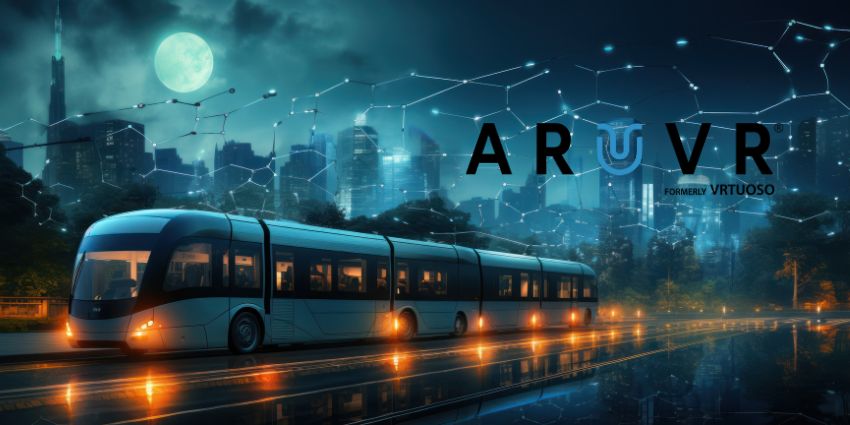Extended reality (XR) provides massive potential in the industrial and manufacturing space by promising new opportunities for rapid product creation, prototyping, and training. Although it’s safe to say XR offers benefits in various industries. Firms in the manufacturing and industrial sectors were some of the first to explore the potential of this new space.
For years, leading into 2023, manufacturing and industrial brands have searched for technology solutions to solve commonplace problems, such as slow and complex product development processes and expensive training requirements. XR can unlock the manufacturing industry’s true potential, enhancing everything from design to the testing and approval of products.
Various hardware and software manufacturers are in the manufacturing and industrial immersive solutions space, providing unique emerging technologies from industrial Metaverse services to field-service smart glasses.
Here’s what you need to know about the state of XR in manufacturing.
The Potential of XR in the Manufacturing Space
Manufacturing and industrial companies are often keen to embrace the latest technologies and innovations in the digital space. Competition in manufacturing markets means most companies face excessive pressure to deliver innovations quickly, in a safer, more affordable, and more resourceful manner.
Companies and consumers constantly demand more from the manufacturing innovators they work with, whether these companies are building energy production machines or tools for the automotive landscape. Virtual, augmented, and mixed reality (VR/AR/MR) devices can support companies in various ways, such as:
- Improved training: Bringing new team members into the manufacturing and industrial space means teaching them how to use many complex tools. Often, working with these tools in-person can be time-consuming and expensive, as it requires downtime in a facility. However, with XR, professionals can learn how to use and master machinery with minimal strain for the larger company.
- Rapid product designing: Many manufacturing brands already use VR to reduce the time between the initial design and modelling segments in product development. The time-consuming need to create physical prototypes is minimized by the ability to develop and experiment with digital twins of products in the virtual world. This can make the time-to-market in a manufacturing and industrial space faster too.
- Process improvements: Using AR and AR visualizations via immersive devices like smart glasses. On-site engineers and technicians can access collaborative support from other professionals and even access instruction manuals in real-time. This means experts in the industrial and manufacturing landscape can spend less time browsing through hefty manuals and more time getting work done.
Trends Driving XR in Manufacturing
Many companies in this particular sector are embracing the possibilities of XR, leading to an increased demand for innovative immersive solutions, particularly in a post-pandemic landscape. Now more than ever, companies must use the right technologies to make their processes as efficient, safe, and collaborative as possible.
So, here are some of the major trends driving the demand for XR in manufacturing and industrial landscapes that include:
Three Key Trends
- Digital twins in product development: Intelligent digital twins in product development represent an excellent opportunity for manufacturing companies. Firms can experiment with new ideas and design products much faster. With digital twins in a VR landscape, it’s possible to experiment with a wide range of materials and even collaborate with colleagues on projects from a distance, all without wasting money on travel and resources.
- Remote maintenance and assessment: In the manufacturing and industrial landscape. A lot of time is spent waiting for engineers and experts to arrive on-site and assess a problem or confirm a product is ready for shipment. XR can reduce the need for travel between industry experts and areas. Emerging 5G and IoT solutions will also increase the possibilities for conducting on-site operations remotely.
- Smart glasses: Smart glasses are also becoming a more commonplace immersive solution to assist with many aspects of a modern workplace – particularly in manufacturing and industrial environments. With access to smart glasses, companies can easily manage and distribute valuable information about a product or machine without carrying around hefty manuals or books. The same glasses can stream video information directly to other staff members for improved collaborative insights and guidance. Firms such as RealWear, Vuzix, and Lenovo are designing industrial-grade smart glasses for facing hazardous industrial environments.
Moreover, with the arrival of industrial metaverse solutions and content creation tools, the XR landscape will lead to the development of brand-new digital solutions for the manufacturing space.
Exploring the Future of XR in Manufacturing
With the potential to accelerate product development, improve collaboration, and change how teams interact globally, XR can make a significant difference in the manufacturing and industrial space.
Also, as technology in the XR space continues to grow, with the arrival of products such as the industrial metaverse, 5G, and haptic feedback, more industrial and manufacturing challenges will gain new solutions in the future.
XR can also improve operations like logistics management and manufacturing productivity while ensuring teams can work together on new use cases.







